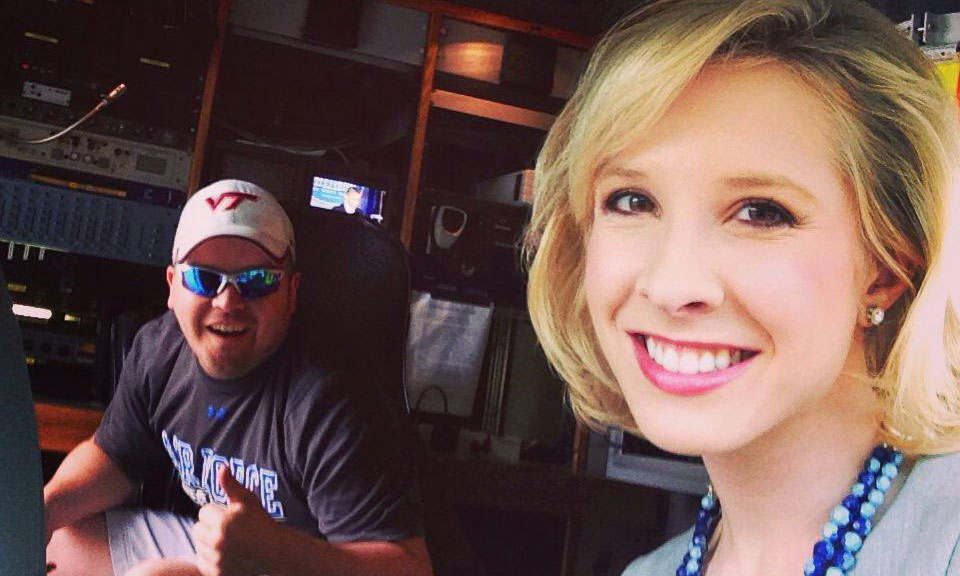
Virginia Shooting Highlights Safety Concerns for TV News Crews
Associations in the television news industry had safety concerns prior to this week's murder of a Virginia TV reporter and cameraman, which was shown on live television and published through social media. If anything, the incident only reinforced those concerns.
Associations representing the television news industry had safety concerns before this week’s slayings of a Virginia TV reporter and cameraman, which aired on live television. Now, calls to protect journalists in their work have new urgency.
Editor’s note: This piece has been updated to include a statement from the National Press Photographers Association.
Wednesday’s deadly shooting of a Virginia television reporter and cameraman by a disgruntled former colleague stirred up a lot of emotions for television news professionals.
The deaths of WDBJ journalists Alison Parker and Adam Ward at the hands of Vester Lee Flanagan (who used the name Bryce Williams professionally) while they reported a story live on a Roanoke morning news program prompted shock, sadness, and outrage nationwide. The story raised serious ethical questions for reporters about whether and when it’s appropriate to include graphic video and photos in coverage of violent crimes. In particular, use of images of the shootings by New York City newspapers created a major outcry from the public and from fellow journalists.
The shooting intensified serious safety concerns for many of those same reporters. The Radio Television Digital News Association (RTDNA), which represents journalists working in electronic media, had already raised alarms about safety after TV news crews in San Francisco were robbed at gunpoint in July while reporting on a murder.
“Covering news means we can find ourselves in the midst of civil unrest, natural disasters, police activity, and other high-risk situations. But in the Bay Area, just doing our daily jobs feels like high-risk,” wrote Janice Gin, a trustee for the Radio Television Digital News Foundation, in response to that incident.
The association already had planned to focus on safety issues at the Excellence in Journalism meeting next month—with a session moderated by Gin. Now, it has a new reason to do so.
In the wake of Wednesday’s shooting, the NYPD increased security for New York City news crews, and stations in other markets, such as Pittsburgh, discussed ways for their reporters to stay safe.
Mike Cavender, executive director of RTDNA, said in a statement to The Washington Post that Wednesday’s shooting was an example of workplace violence in a new context.
“TV is a stressful business, but the fact is we’ve seen workplace violence occur in places that are far less stressful than TV,” Cavender said, adding that “every workplace has to be aware of and deal with” individuals who are unstable.
Cavender’s sentiment was echoed by the Communications Workers of America, a trade union that represents broadcast journalists through its National Association of Broadcast Employees and Technicians subsidiary.
“The threats journalists face on the job every day do not normally include their coworkers,” the union said in a statement. “But tragically, work-related shootings and other violence are not uncommon in the United States. Our members in the media sector and all of the Communications Workers of America are gravely concerned about this issue and committed to helping build safe workplaces.”
And the leaders of the National Press Photographers Association (NPPA)—president Mark J. Dolan and executive director Charles W. L. Deale, FASAE, CAE—emphasized that the group would re-emphasize safety discussions in its education efforts.
“This tragedy illustrates the dangers facing all journalists, even on the most innocuous assignments,” NPPA said in a statement. “In particular, broadcast journalists participating in live reports may be far more susceptible to becoming victims of theft or acts of violence, as was sadly proven again today. NPPA commits to incorporating discussions on safety issues and situational awareness training into the curriculum of its future educational programs.”
Virginia shooting victims Adam Ward, left, and Alison Parker. (via Facebook)






Comments